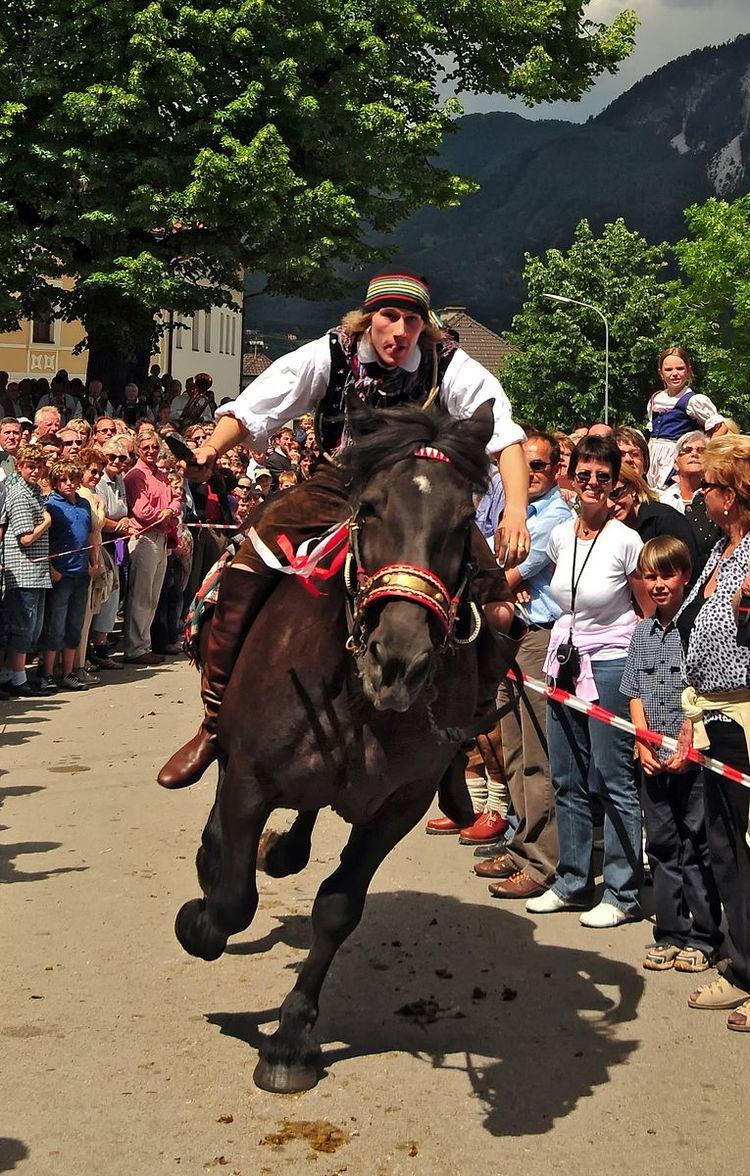 | ||
Slovene quintain (Slovene: štehvanje, German: Kufenstechen) is an old Slovene folk game, a form of quintain, that has been preserved in the southern Austrian province of Carinthia, in the Gail Valley. This quintain competition has taken place every year in Savlje (Ljubljana) and sometimes in neighboring villages since the 1930s.
Contents
History
It is believed that Slovene quintain is the rustic form of a Roman knight game called quintain. It originated in conjunction with local blessings and Pentecostal games. It has been present in the villages of Ljubljansko Posavje (Ježica, Savlje, Kleče, Stožice and Mala Vas) since 1935, when ethnomusicologist France Marolt presented this custom at a folklore festival in Ljubljana. The exercises were held under the leadership of Janko Zwitter from Achomitz (Slovene: Zahomec) in the Gail Valley.
It may have come from Udine where it was popular in the 18th century. Carters brought this game with them as the traveled from Vienna to Trieste, passing Udine and Tarvisio. The name derives from the German word stechen 'to stab', which indicates that in the beginning players stabbed a barrel with a long iron pole. However, because the pole was never sharp enough to stick into a wooden barrel, they began to use an iron bat.
Variations
Gail Valley quintain: The wooden pole is hammered in to the ground. A wooden barrel, wrapped with hazel rings, is placed on the pole. Boys then ride past the barrel and hit it with metal bats, trying to cut hazel rings. They are dressed in Gail national costume and ride Norican mares. They ride three times to get a prize wreath. Then the boys sing a ceremonial song "God Give Us Good Time" (Bug nan dajte n dober čas), which is followed by a ceremonial folk dance named the high dance (visoki rej) or the first dance (prvi ples). Boys take girls dressed in colorful Gail costumes, under the linden tree (na rej pod lipo). Dancing is accompanied with songs in Slovene and German.
Sava Valley quintain: Quintain in Savlje has a competitive nature. The boys collect points when cutting hazel rings on the barrel. The winner is the one who scores the most points. They are dressed in Upper Carniola national costumes. After the game follows traditional Slovene festivities and a raffle.
